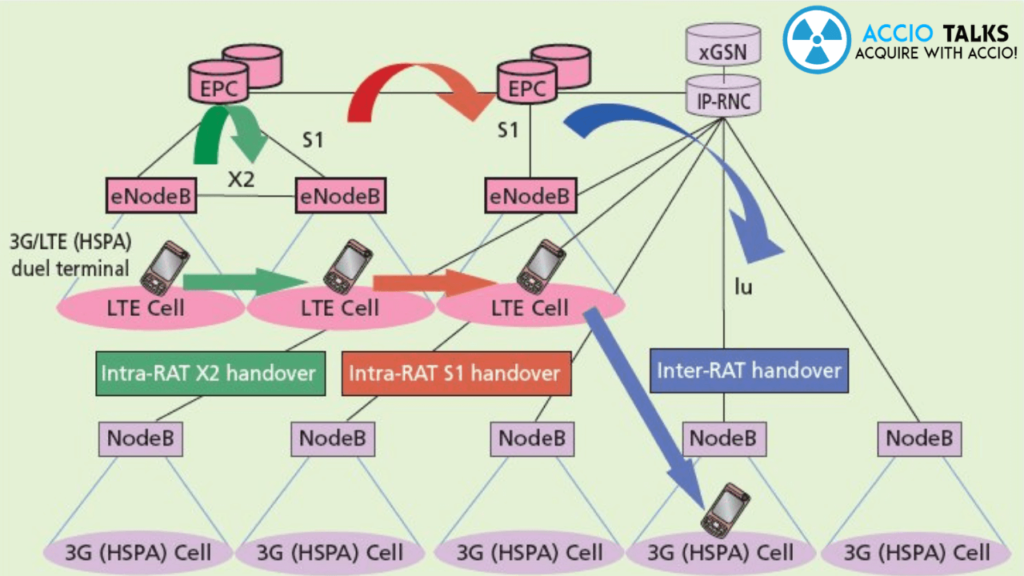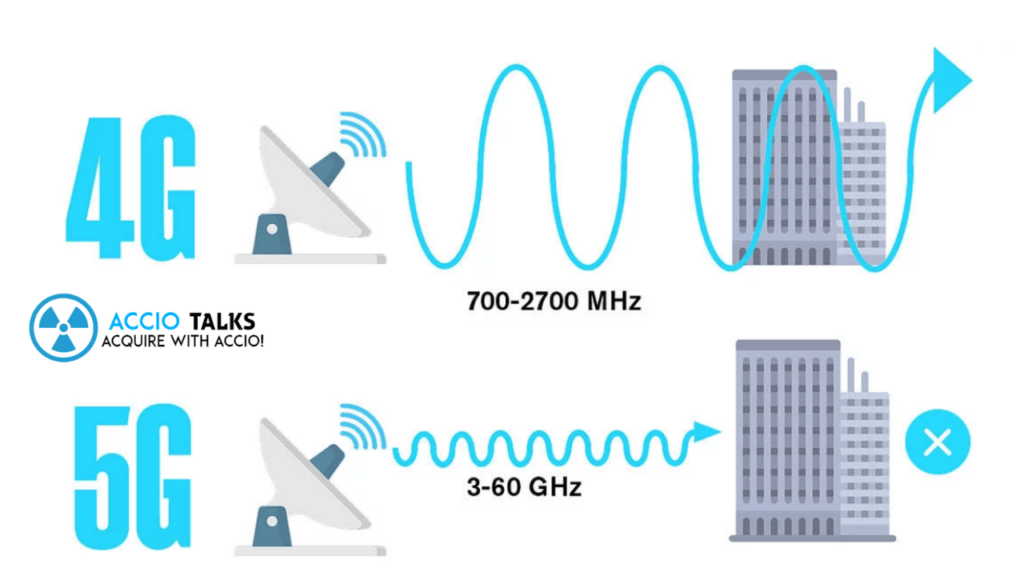gaziantep escort,gaziantep rus escort,gaziantep escort,seks hikayeleri
5G vs 4G Networks Explained | Which is Best For You?
Do you know the real difference between 4G and 5G networks. Is 5G even worth it in India? Know the full story here.
4g and 5g are known to be the cellular network of 4th generation and 5th generation respectively as 4g is the succeeding version of 3g and the 5g is the succeeding network version of 4g.
In late 2000s the fourth-generation mobile connectivity started making a great leap in the market and 4g network lead to increase in speed up to 500 times faster than the existing 3g network and this network allows one to stream or support HD TV shows in mobile presenting a phase of new era of mobile network technology.
A hype has been created for 5g and after this we had seen the display of its capabilities in the first trial of the network. 5g is believed to be smarter and faster than the 4g network and it promises a network speed that outrides the broadband networks which are currently available in the market.
This network system provides the similar capabilities provided in 4g, 5g is defined by ITU in IMT advanced.
Technical Overview of 4G
The International Telecommunication Union Radio communication sector specified some requirements for the 4g networks and named it as
(IMT- advanced) specification and they have set some speed requirements for the 4g services at 100 Mb/s for the high mobility communication network and also 1 Gb/s for low connection network devices. The first release of LTE which supports more than 1GB/s bit rate, although they are not yet proven to be fully IMT- advanced systems but are known to provide the branded 4g network services. According to the operators the deployment of the non-backward compatible technology is due to the new generation of networks.

The 4g system doesn’t support the services of circuit switched modes but instead of this all internet protocol (IP) based communication such as the IP telephony and the spread spectrum IP technology already have been used in 3g technology bounded in all the 4G candidate systems and are to be replaced by the multi carrier transmission in other frequency domain equalization technologies in the 4G networks.
Technical Overview of 5G
The main advantage of these new 5g networks is that they come with the greater bandwidth and this network lead to a good download speed in one’s device. Mainly it produces speed up to 10GB/s. and due to this the bandwidth increases, it is already in everyone’s mind that this would be very reliable to be accessed in every device and will be used as general internet service providers for the laptops and the desktop computers competing with the existing ISP’s such as the local cable internet network providers and also it is possible to make new application introductions in internet with these things and in machine learning areas which require the 5g enabled wireless devices.

The increased speed is achieved by using higher-frequency radio waves than previous cellular networks in 5G. Higher-frequency radio waves in 5G comes shorter in useful physical range, requiring the smaller geographic cells. 5G networks operate on up to three frequency bands, low, medium, and high for wide area services.
A 5G network is composed of networks of three different types of cells, each of them requiring specific antenna designs, each providing a different trade off download speed vs distance and service area. 5G cell phones and the other wireless devices which connect within range network require to possess the highest speed antenna.
Performance Of 4G
In this field of mobile network communications, a newer generation comes to introduce a change in the nature of the service, non-backward but a compatible transmission technology, with higher peak bit rates, wider channel frequency bandwidth in Hertz, having higher capacity for all the simultaneous data transfers.
Every ten years New mobile generations have appeared, since the first move from 1981 to 1992 analogue (1G) to (2G) transmission. In 2001, 3G networks had spread spectrum transmission and have the minimum peak bit rate of 200 kb/s, in 2011 and 2012 to be followed by 4G networks, which refers to all the Internet Protocol (IP) and the packet-switched networks from those mobile ultra-broadband and this network access known as gigabyte speed.
While the ITU adopted the recommendation for the technologies so that it may be used for the future global communications, they do not perform with the standardization or development work, instead rely on the work of other standard brands such as 3GPP.
The fastest 4g standard in the UMTS family is that the HSPA+ standard, which is available commercially from the 2009 and offers at least 28 Mb/s downstream without MIMO, with only one antenna, and in the year 2011 they accelerated up to 42 Mb/s peak bit rate to downstream using either the DC-HSPA+ or 2×2 MIMO.
Theoretically speeds of the 4g network speed up to 772 Mb/s were possible, but have not been deployed yet and the fastest 4G network-based standard in the CDMA -2000 family is EV-DO Rev. B, which is only available since 2013 and offers 15.67 Mb/s downstream.
Performance Of 5G
The speed of 5G will be ranging from 50 Mb/s over to a gigabyte/s. “mmWave” is known as the fastest 5G, as from July 3, 2019, the top speed of mmWave touched 1.8 Gb/s on AT&T’s 5G network.
6-GHz 5G (mid-band of 5G), by far is the most common bandwidth, it usually delivers speed between 100 and 400 Mb/s, but this will have a much farther reach than the mmWave, especially when one is at outdoors. On the other hand, the Low-band spectrum offers the greatest range bandwidth, therefore this will have the greatest coverage area for a given site, but it is slower than the others.
5G new radio speed in 6-GHz bands, can be slightly higher than the 4G with the similar amount of the spectrum and all 5g situated antennas, although some of the 3GPP 5G networks will be slower than the advanced 4G networks, such as those T-Mobile’s network LTE and the LAA network, which achieves 450+ Mb/s in Chicago and Manhattan.
The 5G network specification allows LAA but LAA in 5G has not been demonstrated yet. Adding LAA to the 4G networks bandwidth configuration can be helpful in adding hundreds of MB/s to the existing speed, but this is a network extension 4G, not the newer part of the 5G network standard.
The similarity in terms of 4G and 5G in the existing bands is because 4G networks already works on the approach of the Shannon limit on data communication rates like the 5G network speeds in the less common millimetre wave spectrum.
Technical Difference Between 4G and 5G
For wireless technology 5G is only one network which represents a revolutionary leap forward. 5G could bring the speeds up to 300 times faster than its current 4G LTE network. 5G could be 10 times faster than 4G and more conservative estimates states. Speeds will vary between based on the type of 5G technology used.
In addition to higher speeds, 5G promises lower latency and it had the average LTE latency for over 10 milliseconds down to 1 millisecond. 5G can also be easily operated in all multiple spectrum bands. On the low band (sub-1 GHz) spectrum is generally used for the network like LTE where speeds will max out at about 100Mbps.
The mid-band spectrum offers the speeds up to 1 Gb/s but it is having the less ability to penetrate buildings. The propagation of losing above 4 GHz will be compensated for the massive multiple-input multiple-output technology, which when grouped with multiple antennas together at a single cell tower of network.
Telit Infographic – How Does 4G Stack Up to 5G?
As it ranges to be one of the top listed issues in the high-band spectrum (also called mmWave), but 5G really shines with the speeds possible up to 10 Gbps.
While the network field is crowded with lower frequencies with only a few bands available in the world of network, the range between 30 GHz and 39 GHz is open fairly. Miniaturized antennas and more processing power have made these frequencies usable in ways they previously were not.
| Comparison | 4G | 5G |
| Introduced Year | 2014 | 2019 |
| Technology | LTE, WiMAX | MIMO, mm waves |
| Access System | CDMA | OFDM, BDMA |
| Switching type | Packet switching | Packet switching |
| Internet Service | Ultra-broadband | Wireless world wide web |
| Bandwidth | 30Ghz to 300Ghz | |
| Advantage | Speed, high speed handoffs, global mobility | Extremely high speeds, low latency |
| Applications | High speed applications, mobile TV, wearable devices | High resolutions video streaming, remote control of vehicles, robots, and medical procedures |
| Peak speed | 1 GB/s | 10 GB/s |
| Average speed | 45.56 MB/s | 264.7 MB/s |
| Coverage area | 50-150km | 50-80km |
| Antennas required | 1 | 600 |
| Services | Most IOT with low internet traffic | Driverless Cars and drones |
| Disaster Resistance | Good | Poor |
| Subscription cost | Today’s pricing | 3 times cost of 4g |
Wavelength – 5g and 4g
Initially, the wavelength was associated with respect to the International Telecommunication Union standard, and its requirements to the download speed of 20 Gb/s and 10 GB/s upload speed, along with all other requirements. Then, the industry network standards group of 3GPP chose the 5G NR (New Radio) standard to be together with the LTE along with the proposal for the submission to the IMT-2020 standard.

The first phase of 3GPP 5G specifications was scheduled to be completed in 2019. The second phase of this is yet to be released and is due to be completed in 2020.
5G wavelength can include almost all the lower frequencies which are under 6 GHz and have higher frequencies above 24 GHz. The speed and the latency of the 4G and 5G is early in FR-1 deployments, using all the 5G N-Radio software on 4G hardware, these are slightly better than the new network 4G systems, estimating to be better ranging from 15% to 50%.
IEEE covers at least all different areas of 5G with a core focus in the wavelength sections in between the Remote Radio Head and the Base Band Unit. During the series of 1914.1 all were having the standards focusing on the network architecture of different wavelength regarding the network equalizer and dividing every connection between the RRU and BBU into two key sections.
Radio Unit to the Distributor Unit being the Next Generation Fronthaul Interface and the Distributor Unit to all the Central Unit being the NGFI, thus the interface to be allow more diverse and cost-effective network wavelength to that of the 4G.
The defined performance values which should be compiled to ensure all the different traffic types defined wavelength by the ITU and are capable of being carried. 1914.3 standard is one which created a new Ethernet frame format which would be capable of carrying IQ data in a much more efficient way which is totally depending on the functional split utilization.
This is totally based on the 3GPP of functional splits. The wavelengths of the Multiple network synchronization standards within the IEEE groups are being updated for wavelength of 4G and 5G networks’ timing accuracy at the RU maintaining them to a level required for the traffic being carried over it.
4G and 5G – Frequency
Frequency of 5g comes with the definition of High-band spectrum and is sometimes known to be the millimetre wavelength (mmWave) in the cellular industry, and it readily enables about 26 GHz of frequency. This is absolutely faster than 4G networks, which use about 750 MHz-2500 MHz frequency to transfer the information.
The introduction of a number of features that 5G promised to provide it to users, including the potential support of a number as great as 1 million devices per square kilometre. In high-band spectrum for 5G the FCC has been made ready to open up to a vast amount of bandwidth. This spectrum is known to be the latest 5G new radio frequency band.
Recently as the 5G UWB network uses at least 26 to 39 GHz mmWave spectrum bands which is having 40x bandwidth of 4G LTE 750MHz network. In latency this will additionally aid the network, capacity and speed too, as on that high-band frequency spectrum the higher number of devices will be able to operate. To provide a brief idea, 4G latency is around 20-30 milliseconds, which means that for information transfer it takes that amount of time to travel between origin and receiver.
5G latency, is expected to reach below 10 milliseconds. It will also be deploying 5G technology on lower frequency bands including 700 MHz-2500 MHz frequency range in order to cover a wider area. This means that the devices that are used in 5g or 4g further away from the antennae should be able to access the network.
Overall, 5G is expected to improve their user experience for better feedback for, industrial automation, Internet of Things (IoT), etc. Smart cities and infrastructure management which are already relying on 5G’s capacity to handle all the devices that require a large amount of data in short period of time. These devices should be able to work reliably and securely in high-density areas like factories, airports and urban centres.
Conclusion
While all tests have been rolled out across the globe, for the first time the broad 5G coverage is being spread across the whole world, having a low-band spectrum (700-900 Ghz range) which is required for these kinds of networks, which will only become available in 2020, as said by Mr. Petty. Vodafone has already announced that they will launch 5G in 19 cities across the country at the same point in the year along with BSNL.
Early releases of 5G will help to make a primary focus on the dense urban areas, or where people are wanting to build and test new 5G applications for usage in industry 4.0 or in automotive applications. According to the government, there will likely be a great moment when 5G networks would be ‘switched on’, which would be marking the start of a new ‘evolutionary process’.
But it’s likely that the consumers would readily procure with the handsets and find the areas in their cities from 2020 onwards which covers their respective area in order to avail 5g services.
Also Read: BSNL 5G- Launch Date, Super Network, Prepaid 5G Plans, Sim Price.
Do follow us on our social media handles for post updates.



